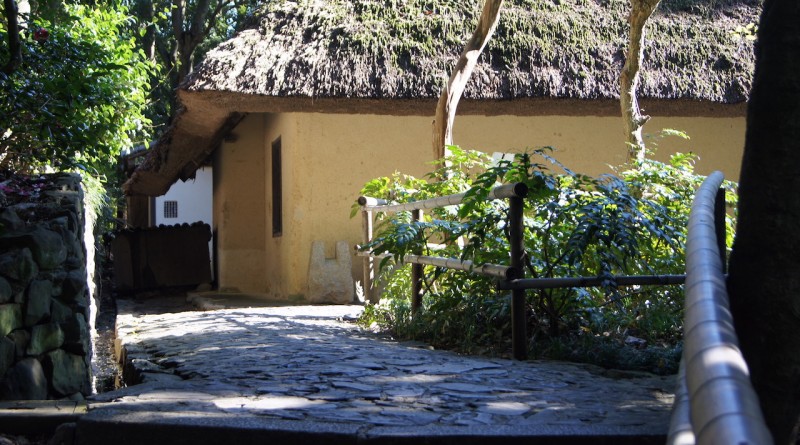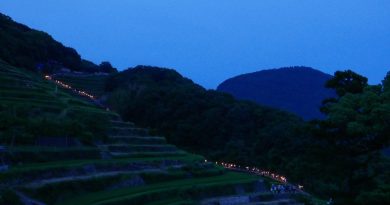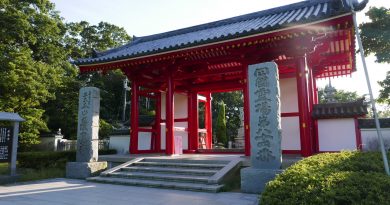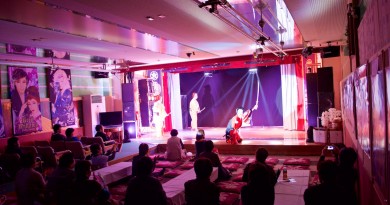Shikoku Mura – Experience the Old Japan
Shikoku-Mura, meaning Shikoku Village, is an open air museum at the base of Mount Yashima for which over 30 traditional buildings, structures and goods from all over Shikoku have been relocated to Takamatsu to preserve and exhibit them.
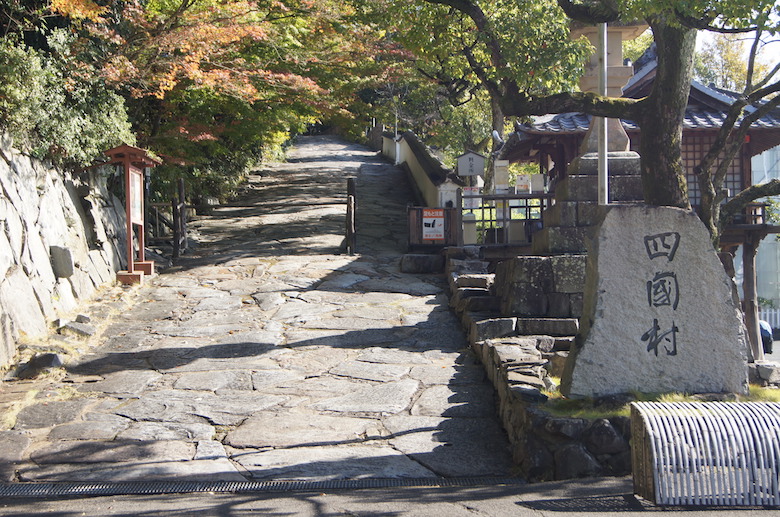 The entrance to Shikoku-Mura, with the cashier to the right. You can get brochures in several languages which explain some of the exhibits there.
The entrance to Shikoku-Mura, with the cashier to the right. You can get brochures in several languages which explain some of the exhibits there.
 If you immediately turn left after the cashier, the first and also one of the most popular attractions in Shikoku-mura awaits you – the traditional wooden suspension bridge that originally comes from Tokushima’s Iya Valley, in the east of Shikoku.
If you immediately turn left after the cashier, the first and also one of the most popular attractions in Shikoku-mura awaits you – the traditional wooden suspension bridge that originally comes from Tokushima’s Iya Valley, in the east of Shikoku.
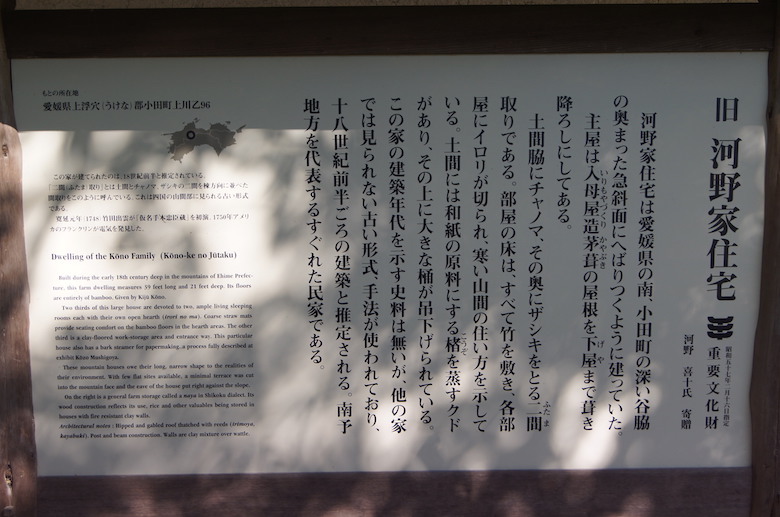 These signs are posted up at most of the structures to give you an insight in their history and from which part of Shikoku they came from originally.
These signs are posted up at most of the structures to give you an insight in their history and from which part of Shikoku they came from originally.
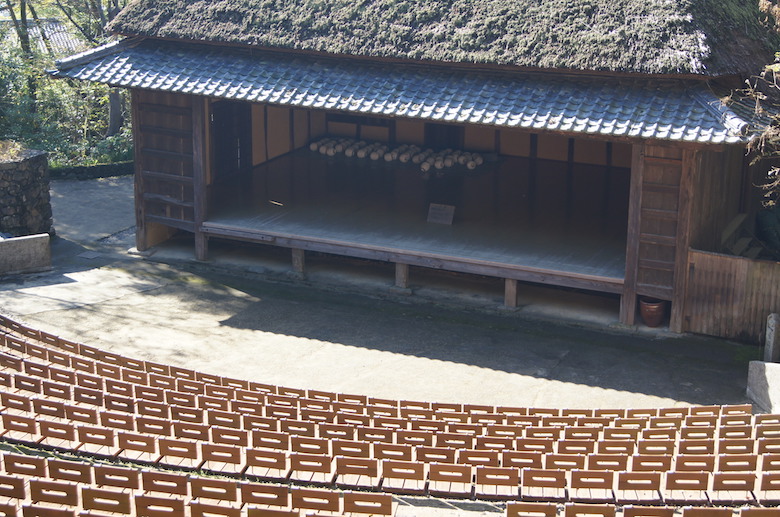 As you go on you’ll find the impressive Kabuki Theater that hosts shows in summer from time to time.
As you go on you’ll find the impressive Kabuki Theater that hosts shows in summer from time to time.
Please keep in mind that all these buildings are not replicas, you’ll be able to touch and explore buildings that have been actual living and working areas for people hundreds of years ago.
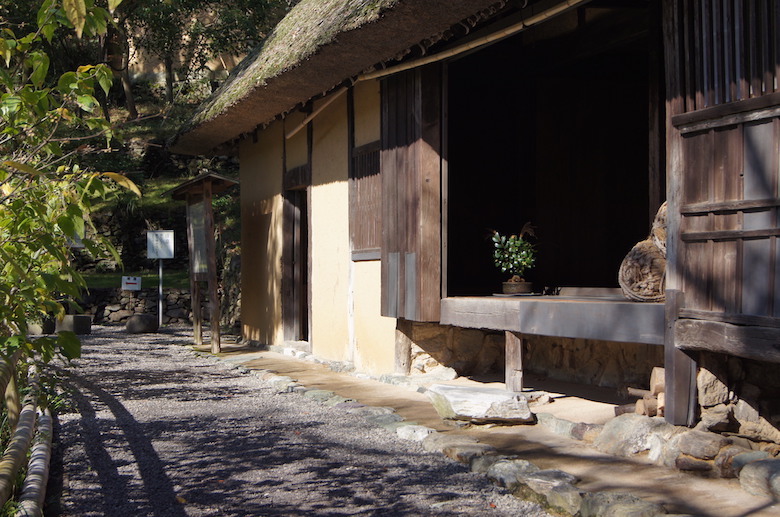 You will see many different types of homes, with all their furniture and work equipment still preserved.
You will see many different types of homes, with all their furniture and work equipment still preserved.
This particular dwelling was built in the 18th century deep in the mountains of the Ehime Prefecture, in the west of Shikoku. With few flat sites available in the mountains, terraces were cut into the mountain face to offer more space for the buildings.
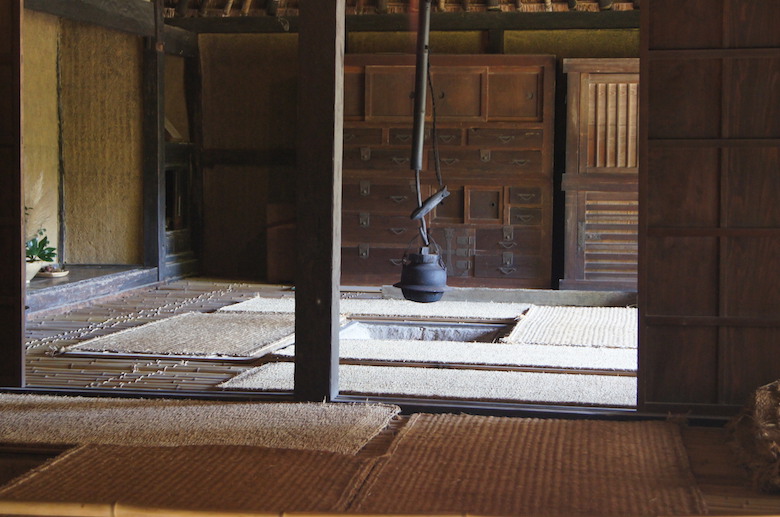 The living area inside the dwelling. You can clearly see the bamboo floors which are covered by coarse straw mats to provide “seating comfort” to the tenants.
The living area inside the dwelling. You can clearly see the bamboo floors which are covered by coarse straw mats to provide “seating comfort” to the tenants.
In the middle of the room there’s the open hearth and an iron cooking pot hanging over it.
As you scout deeper into the park you will find all kinds of traditional buildings which let you imagine how life was in days gone by.
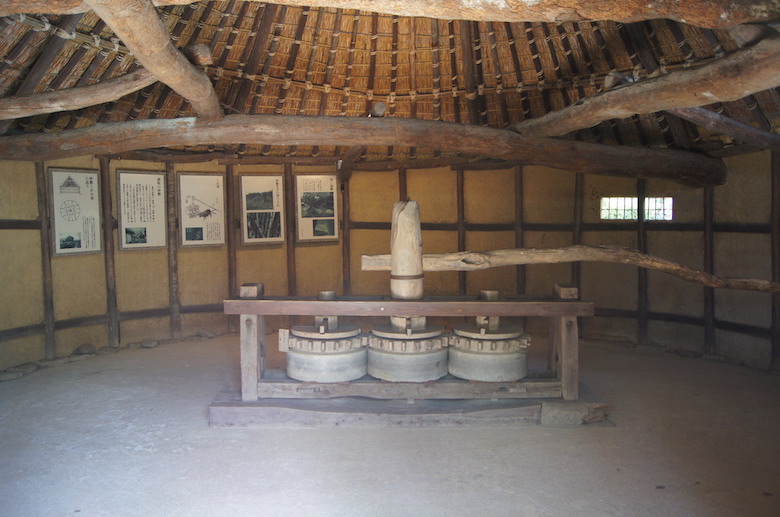 For example this sugar mill dating back to the Edo-period (1600-1867) During this time, sugarmarking became popular in the Sanuki region (present-day Kagawa prefecture) and here you can see one of the only two remaining sugarcane presses in Shikoku from that era.
For example this sugar mill dating back to the Edo-period (1600-1867) During this time, sugarmarking became popular in the Sanuki region (present-day Kagawa prefecture) and here you can see one of the only two remaining sugarcane presses in Shikoku from that era.
Three stone mortars, driven by oxen pulling the long crossbeam on the right hand side.
It is possible to see the spots where the bellies of the oxen rubbed on the wood and discoloured them gradually over the years.
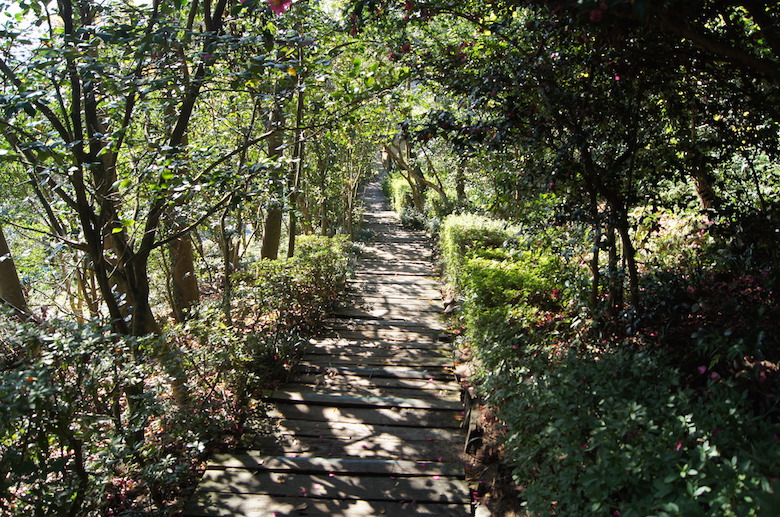 The historical structures for themselves are already outstanding, but the paths that lead you from building to building are not any less incredible as you can see in this picture.
The historical structures for themselves are already outstanding, but the paths that lead you from building to building are not any less incredible as you can see in this picture.
Shikoku-mura has not only astonishing historical structures to offer but also plentiful of nature on its area of approximately fifty thousand square meters.
Countless little paths are leading you through seemingly untouched nature at the base of Mount Yashima.
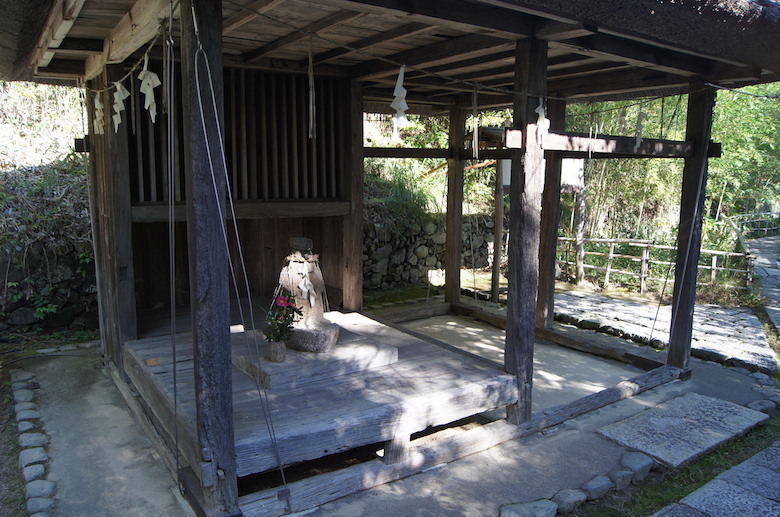 If you follow the path you saw earlier you will find this part temple, part rest area, part meeting place kind of building. Small structures like this were often built on main roads just outside town to keep away wandering spirits and provide shelter for pilgrims.
If you follow the path you saw earlier you will find this part temple, part rest area, part meeting place kind of building. Small structures like this were often built on main roads just outside town to keep away wandering spirits and provide shelter for pilgrims.
The villagers who lived in the town close to this building served tea to pilgrims who did the 88 temples pilgrimage and stayed there, in hope for religious merit.
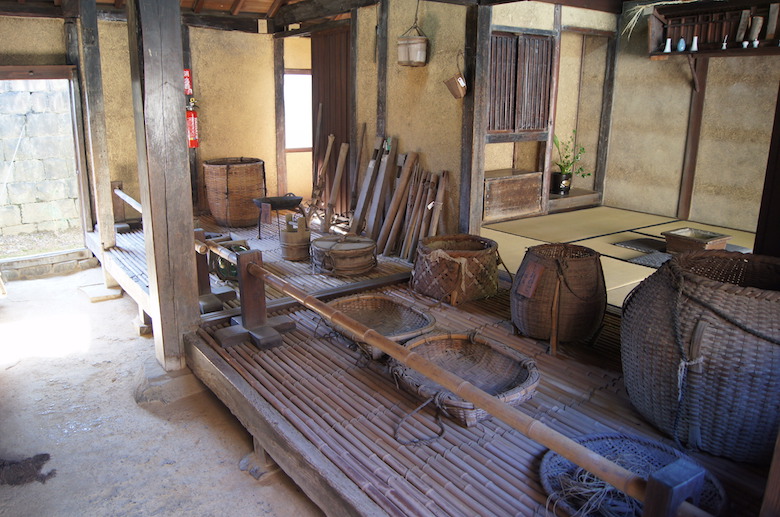 You can see in the exhibits how people adjusted to the harsh life before having today’s technology and knowledge.
You can see in the exhibits how people adjusted to the harsh life before having today’s technology and knowledge.
All the buildings are formed uniquely to the tenants living circumstances.
For example, this was the house of a fisherman, so the baked clay entrance on the left hand side and the adjacent bamboo floors on the right are designed for the return of dripping wet fishermen and their gear.
All in all we hope to have sparked your interest in Shikoku Mura now, it is an unique chance to gain insight on how people in former times have worked and lived in Japan.
INFORMATION
Shikoku-mura / 四国村
- ADDRESS:〒761-0112 香川県高松市屋島中町91
- PHONE NUMBER:+81-87-843-3111
- PRICE:Adult ¥800, Child ¥300
- OPEN HOURS:8:30~17:30(Nov~Mar) , 8:30~18:00(Apr~Oct)
(Last admission one hour before closing time) - MAIL:info@shikokumura.or.jp
- WEB:http://www.shikokumura.or.jp/
- FACEBOOK:https://www.facebook.com/shikokumura

